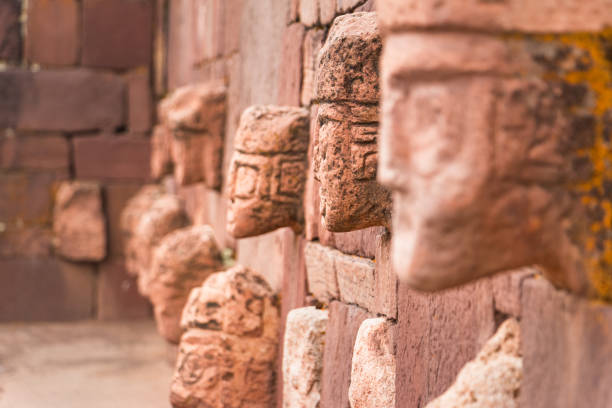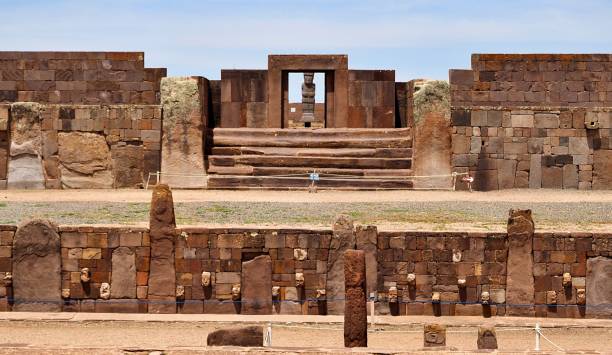Tiahuanaco, also known as Tiwanaku, is an ancient archaeological site located in Bolivia, near the southern shores of Lake Titicaca. The site is believed to have been the center of the Tiahuanaco civilization, which flourished between 300 BC and 1000 AD. The ruins of Tiahuanaco are characterized by impressive stonework and intriguing sculptures that continue to fascinate archaeologists, historians, and visitors alike.
The site at Tiahuanaco includes several impressive structures, including the Akapana Pyramid, the Kalasasaya Temple, and the Puma Punku complex. These structures are made of enormous blocks of stone, some of which weigh up to 200 tons, and were constructed using advanced engineering techniques. The stones were quarried from nearby mountains and transported to the site, where they were cut and shaped with remarkable precision. The stonework is so precise that it is said that not even a knife blade can fit between the blocks.
The most famous structure at Tiahuanaco is the Akapana Pyramid, which is believed to have been a religious center. The pyramid is over 50 feet high and features a series of terraces and platforms. Archaeologists believe that the pyramid may have been used for religious ceremonies, and that it was aligned with the sun and other astronomical phenomena.
The Kalasasaya Temple is another impressive structure at Tiahuanaco. The temple is surrounded by a large courtyard and features intricate carvings and sculptures. The temple is believed to have had both religious and political significance, and may have been used for rituals and ceremonies.
The Puma Punku complex is located just outside of Tiahuanaco and is known for its intricate stonework and engineering. The complex features finely crafted stone blocks, some of which weigh more than 100 tons. The stonework is so precise that it has led some to speculate that the Tiwanaku people had access to advanced technology.

Despite its impressive construction and engineering, the purpose of Tiahuanaco remains shrouded in mystery. The site is believed to have been a religious and cultural center, and may have been a hub of trade and commerce. Additionally, the complex astronomical alignments and carvings at the site suggest that the Tiahuanaco civilization had a deep understanding of astronomy and mathematics.
Tiahuanaco is an important cultural and historical site that continues to inspire and intrigue visitors from around the world. Visitors can explore the site and marvel at the impressive stonework, carvings, and engineering. Additionally, the nearby town of Tiwanaku offers further insight into the culture and society of the Tiwanaku people.
To preserve and protect this unique cultural treasure, the Bolivian government has implemented conservation and sustainability initiatives, including the establishment of protected areas and educational programs. By working together to preserve Tiahuanaco and other archaeological sites, we can ensure that future generations can continue to appreciate and learn from these remarkable wonders of the ancient world.
Tiahuanaco is an incredible example of ancient engineering and architecture that continues to inspire and awe visitors from all over the world. Despite its age, the precision and complexity of the stonework, carvings, and astronomical alignments at Tiahuanaco remain a mystery and a testament to the creativity and ingenuity of the Tiwanaku civilization. Whether you are an archaeology enthusiast or simply an admirer of stunning feats of engineering, a visit to Tiahuanaco is sure to be an unforgettable experience.










